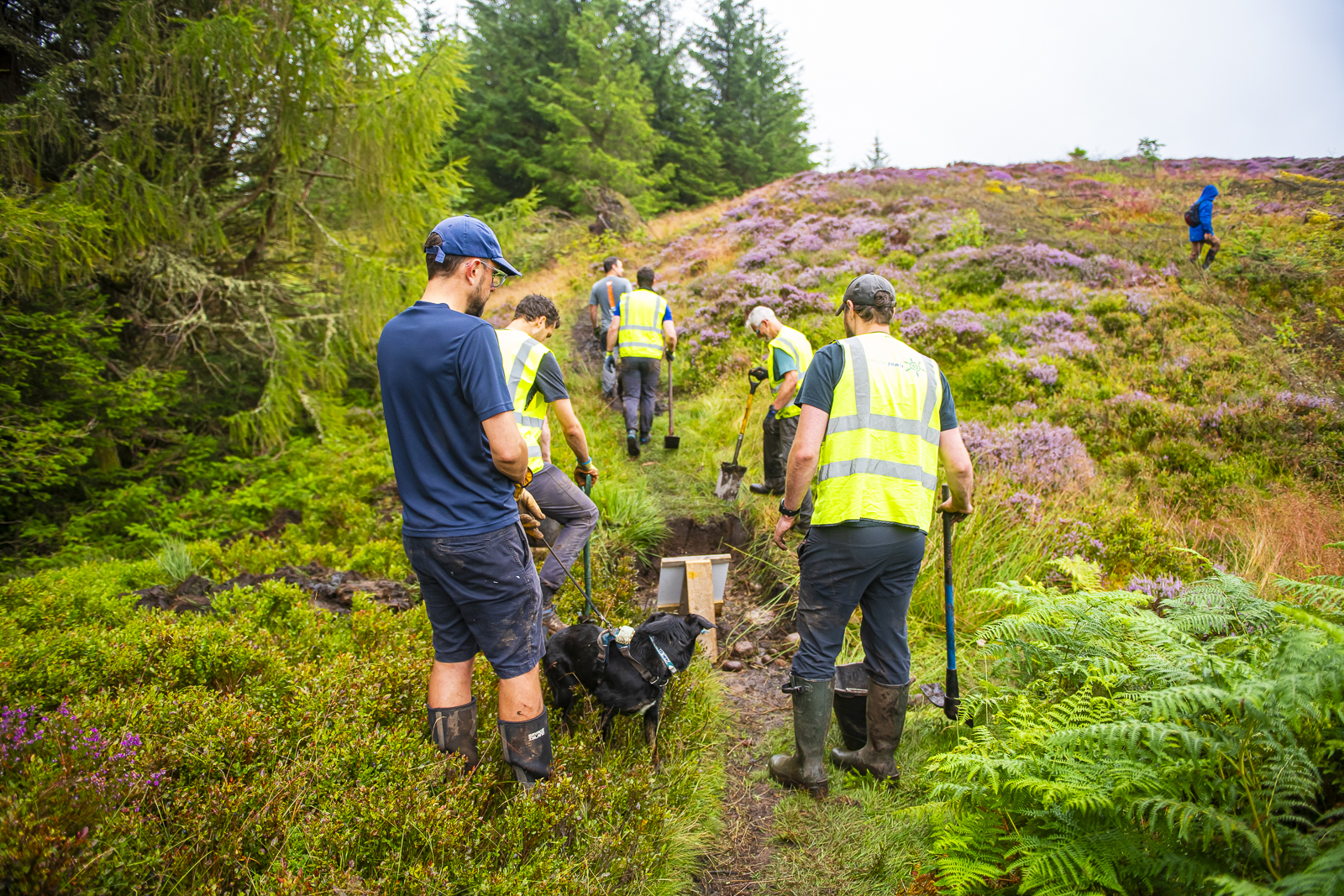Led by Developing Mountain Biking in Scotland, developed by the UK Trails Project and endorsed by Forestry and Land Scotland, the new Trail Guidance is a pathway to better management.
The end result of a pilot project with two different trail associations in Scotland, led by DMBins, this Trail Management Guidance is a template for all trail builders and users to work with land managers wherever you may be.
Read the press release below.

New Trail Management Guidance for Mountain Bikers
Developed with support from the UK Trails Project and reviewed by Forestry and Land Scotland, the Trail Management Guidance for Mountain Bikers provides practical advice for riders, trail associations, and land managers on how to manage and maintain sustainable trails across Scotland.
The guidance introduces clear frameworks — including permits, licences, Sustainable Trails Plans, and Memoranda of Understanding — helping volunteer groups and land managers collaborate safely, effectively, and within legal parameters.
“Our goal is simple — to have the right trails, in the right place, managed by the right people, for the long term,” said the DMBinS team. “This new guidance helps trail associations, land managers, and volunteers build strong, trusted partnerships to sustain the future of our trail networks.”
The guide builds upon previous national resources, including the National Access Forum’s Unauthorised MTB Trails Guide and the UK Trails Project’s Your Trail Report.
Permission Routes
Trail maintenance and development must be undertaken with the land manager’s consent. Depending on the location of the trails, the level of impact and the intended use, this can vary widely in scope and scale. This guidance provided a toolbox to help develop the most appropriate agreements for your site.
- A Memorandum of Understanding (MoU) often underpins these partnerships, while permits and licences handle the specific works.
- Permit – Lower-effort permission for routine, pre-agreed work at a set time or location (e.g. drainage, small tread repairs using hand tools).
- Licence – Case-by-case approval for higher-impact or one-off projects such as new trail sections or reroutes requiring more detailed assessment. Can also include higher-risk work such as chainsaw operations, carried out by competent contractors.
- Sustainable Trails Plan (STP) – A longer-term strategic plan that aligns trail management with wider land-management objectives and sets out how work will be delivered through permits or licences.
- Land Transfer / Lease – For purpose-built facilities or high-use networks needing long-term security (often to enable funding or formal management).
How to Use the Guidance
- Understand your context: location, rider numbers, impacts, and purpose.
- Discuss the right model: Permit, Licence, STP, or Land Transfer—scaled to risk and capacity of both the land manager and volunteers.
- Work transparently: agree roles through an MoU; record competence, insurance, and health & safety details.
- Plan and deliver: use the enquiry form and flow charts to secure permissions before work begins.
- Review regularly: update STPs and agreements as trail use or priorities change.
Helpful Resources
The Guidance contains several useful resources to help you understand and implement a management agreement for your site. These should be reference from the Guidance to ensure the more appropriate application is used.
Sample Memorandum of Understanding (MoU) – template for defining purpose, roles, and review arrangements.
Permit – Routine Work Flow Chart – sample process for simple, low-impact trail work approvals.
Licence – Non-Routine Work Flow Chart – sample steps for assessing higher-impact or complex trail projects.
Trail Works Enquiry Form – for trail associations, clubs, or individuals seeking permission for maintenance, new trails, or post-storm clearance.
Sustainable Trails Plan – Getting Started Guide – guidance on mapping, auditing, consulting, and delivering trail plans.



